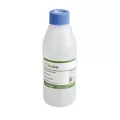Description
ADALINE larvae - buckwheat - 1 box - 250 larvae - The biological control potential of Adalia bipunctata hyperspecialists aphid predators for open field and greenhouse crops is remarkable. This product encompasses 250 grams of the most active larvae of Adalia bipunctata, each weighing about 250 grams. They are packaged in a moisture-retaining buckwheat carrier that is easy to handle
Each of this dedicated predator consumes dozens of aphids of different species like green peach aphid, black bean aphid, and cotton aphid every single day. They are perfect to be applied in vegetables, ornamentals, herbs, and other fruiting crops.Organic farming systems, organic integrated farming systems or eco farming systems also rely on the use these ADALINE larvae - buckwheat to regulate pests and control derives from the ecosystem.
Predator Profile: Adalia bipunctata Larvae
How They Work
Adalia bipunctata larvae, colloquially called two-spotted ladybird beetles, are exceedingly active and aggressive feeders on aphids. Their predation is centered around the target plants as they will not fly away like the adult form.
Their dark, alligator-like description makes them simple to spot and track during crop inspections. The larvae stage of ADALINE lasts several weeks where they pupate and consume hundreds of aphids.
Application and Deployment Recommendations
Most Recommended Practices for Effective Adaline Larvae Release
ADALINE larvae - buckwheat is conveniently applied directly to the crop. The buckwheat infused with ADALINE larvae retains moisture which ensures its safe transportation.
• Apply during early morning or late afternoon to prevent overheating.
• Mound up the bucks with ADALINE sprinkled atop and place on leaves close to known aphid activity hotspots.
• Avoid recently treated areas with insecticides.
Use 70-500ml per hectare depending on aphid population and crop growth stage. Use higher rates for established infestations.
Compatible Environments and Crop Types
Where to Use ADALINE larvae - buckwheat
These products can be utilized under this wide growing restriction, including:
• Indoors and outdoors herbal gardens and hydroponic systems.
• Vegetable greenhouses and tunnels.
• Vineyards along fruit orchards.
• Ornamental plants and landscaping.
These products work best when used as part of a multi-component preventive or early intervention IPM strategy.
Advantages Of Using ADALINE larvae - Buckwheat
Primary Features and Benefits for Growers
- Efficient in pest control for more than 60 species of aphids
- Proceeds to feed on localized areas of the plant and hence offers some level of pest control
- Adalia bipunctata, more commonly known as ladybug, ensures predation with no flying away
- Fast-visible reduction on pest population confirmed
- Simple to apply aid ADALINE in using natural buckwheat carriers
- No chemical free residue makes it safe for edible crops
- Maintain high levels of effectiveness in both organic and conventional systems
- Acts as a help to reduce the use of chemically composed pesticides
- Predictable for pollinators and other target beneficial insects
Instructions for Storing and Handling
Keeping the weather between 7 to 10 degrees Celsius away from direct sunlight and places that exceed freezing makes it easy to store ADALINE larvae - buckwheat. Direct exposure to sunlight makes them much less effective so open upon delivery for maximum impact.Due to stress or injury, handling ADALINE requires added care. Should temperature controls need to change, keep in cooler shaded areas with low to medium humidity.
Final Words
Each box of ADALINE - larvae - buckwheat comes with 250 ADALIA bipunctata larvae pack which shrinks the mass reliance on chemicals needed to AMIP allow agronomists to maintain low levels of aphids. This suits AEAP enabling fast results with undetectable effects on pollinator practices.
To achieve aggressive aphid control, integrate ADALINE aphid-larvae and buckwheat into regular scouting and treatment intervals. Best Results may be obtained when used in conjunction with sticky traps and aphid monitoring to minimize the dependence on pesticides.
Reviews
No reviews found




